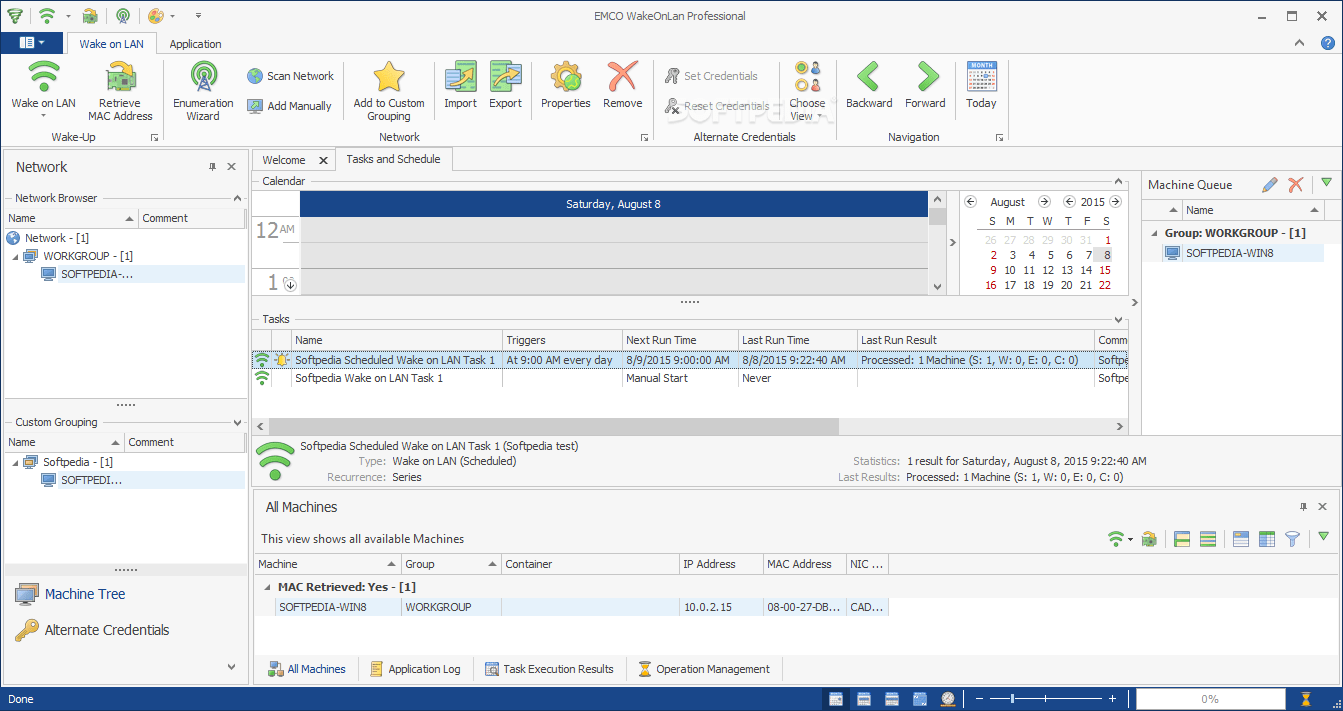

- #Wakeonlan cli tool Pc
- #Wakeonlan cli tool windows 7
- #Wakeonlan cli tool free
- #Wakeonlan cli tool mac
Instead of trying to send a magic packet to your router and relying on your router to forward it properly to the target PC, there are several other solutions.
#Wakeonlan cli tool Pc
Sometimes putting your target PC in the router’s DMZ can work, with the risk that you’re reducing your router’s firewall protection for the target PC.
#Wakeonlan cli tool mac
The UDP packet can get dropped over the Internet, which is out of your control, or your router may not properly de-encapsulate the Layer 3 packet and correctly forward the Layer 2 magic packet it to the target PC’s MAC or broadcast MAC. In my experience, this can be hit or miss. With this knowledge of the Matcode (and Solarwinds) software, I could set up a port forwarding rule in my router to send all UDP packets destined for port 65535 (or port 7 if I’m using Solarwinds) to my target PC. Solarwinds WoL Utility Layer 4 Protocol and Port Matcode WoL Utility Layer 4 Protocol and PortĮxamining the Solarwinds utility with Wireshark shows this utility also uses UDP as the Layer 4 protocol with a target port = 7. Examining the packet in Wireshark shows me that Matcode uses UDP as the Layer 4 protocol with a target port = 65535. The IP address you’d use is your router’s WAN IP address. For example, to use the Matcode utility to send the magic packet over the Internet to a target PC with MAC = 00:01:02:55:77:B3, type mc-wol 00:01:02:55:77:B3 /a. The next step is to examine that packet via Wireshark to see what Layer 4 protocol and port are being used. It’s simple to encapsulate the magic packet in a Layer 3 packet using the Matcode utility or another utility, such as Solar Winds’ Wake on LAN. But even better if you can do so remotely over the Internet! Sending a magic packet over the Internet is a bit more challenging, though, as now the magic packet has to be encapsulated in a Layer 3 packet and get forwarded properly by your router to the target PC.

It’s great to be able to turn on a PC remotely on your LAN. For WoL to function, the NIC on your PC will stay on in a low power state, monitoring for a magic packet.Īn important point of my previous article was to point out that it is possible to send a magic packet from one network to another. Once you enable WoL in the BIOS and OS, you should see the link light ON on the Ethernet port on the target PC and the Ethernet port on the router/switch. If WoL is disabled, there will be no lights on the ports. Before you enable WoL on the target PC, turn the PC off and look at the Ethernet port on the target PC and the Ethernet port on the router/switch it is connected to. It’s easy to tell if your PC will support WoL. In the screenshot below, I’ve enabled my laptop’s Ethernet port for Wake Up Capabilities in the left window and enabled the wake up functionality in the Ethernet port’s Power Management menu on the right. As you can see, I’ve enabled WoL for both my LAN and WLAN interfaces. The first screenshot shows the WoL options from my PC’s BIOS.
#Wakeonlan cli tool windows 7
You can also see the contents of the packet, with “ ff ff ff ff ff ff” followed by sixteen iterations of the target PC’s MAC ( 00 1c 23 01 02 2d).Ī key step for this to work is enabling WoL in both your BIOS and Operating System, as shown in the below screenshots taken from a Windows 7 PC. You’ll see in Wireshark screenshot below, that the MC-WOL utility created a magic packet with my running PC’s MAC as the source address and the broadcast MAC address as the destination address. For example, to wake up a PC on a LAN with a MAC address of 00:1C:23:01:02:2D, you would type mc-wol 00:1C:23:01:02:2D from the command line (CLI). Simply typing mc-wol will send the magic packet over the LAN.
#Wakeonlan cli tool free
A free command line utility I’ve successfully tested that generates a magic packet is Matcode’s mc-wol executable, available here. You can examine these details by generating a magic packet with Wireshark running on your PC. When the packet is sent over a LAN, it is simply sent as a Layer 2 frame, with the sending PC’s MAC address as the source address and either the target PC’s MAC addresss or the broadcast MAC address as the destination address. To understand the magic packet better, it is useful to look at the packet itself. A network interface card (NIC) and PC configured to monitor for the magic packet will turn itself on when it sees it. As a brief review of my last article, WoL uses a “magic packet” containing the broadcast MAC address ff:ff:ff:ff:ff:ff followed by sixteen iterations of the target device’s MAC address.


 0 kommentar(er)
0 kommentar(er)
